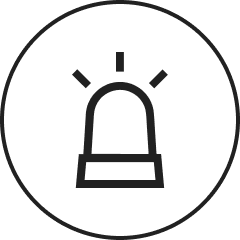
Apply for Home Equity Line of Credit HELOC Loan
A HELOC is a financing option that gives homeowners access to funds using the equity in their home as collateral. Homeowners can apply for home equity line of credit to get a revolving credit line (like a credit card) that comes with flexible borrowing terms. While you could use a HELOC to take your dream trip or purchase a designer handbag, most homeowners use this financing option to cover large expenses, like home renovations, education costs, or debt consolidation. Managing your home equity loan application has never been easier, giving you convenience, financial control, and flexibility all in one.
What is a HELOC Loan?
A Home Equity Line of Credit, known as a HELOC, is a revolving line of credit that is secured by existing equity in your home. For example, if your home is worth $300,000 and you owe $200,000, you have $100,000 of equity. Lenders will allow you to apply for home equity line of credit for a percentage of this equity, giving you flexibility to draw funds as needed. A HELOC is a revolving line of credit that allows homeowners to borrow against the equity they've built up in their property. Unlike a traditional loan, a HELOC works more like a credit card: borrowers are approved for a credit limit and can draw funds as needed during a set draw period, usually 5 to 10 years. Interest is only paid on the amount used, not the full credit limit, offering flexibility for ongoing expenses like home renovations, education costs, or emergency needs.
One of the key benefits of a HELOC is its lower interest rates compared to credit cards or personal loans, since it is secured by your home. Working with a HELOC mortgage broker can help you apply for a home equity loan or line of credit with confidence. However, it’s important to use HELOC funds responsibly, as failing to repay could put your property at risk. Overall, a HELOC can be a smart financial tool for homeowners who need access to cash over time and want the freedom to borrow and repay on their own schedule.
HELOC Loan Requirements
Sufficient Home Equity: Lenders will require a minimum of 10% to 20% of equity in your home to qualify. This is because lenders won’t allow you to take out all of the equity in your home.
Good Credit Score: Good Credit Score: Like most other loans, a good credit score is a key component of securing a HELOC. A minimum credit score of 680 is usually required, but a score above 700 can help borrowers apply for home equity loan online with better interest rates and loan terms.
Stable Income and Employment: Stable Income and Employment: Supporting information like pay stubs, tax returns, and bank statements are required to show consistent income and employment history, which is necessary to successfully apply for home equity loan.
Acceptable Debt-to-Income Ratio (DTI): A debt-to-income ratio (DTI) shows your current debt payments compared to your income. Generally, lenders prefer a DTI below 45%. This means that your total monthly debt payment, including your new HELOC, should be below 45%.
Benefits of Home Equity Line of Credit
-

Flexibility
Borrow what you need when you need it. Everything is on your terms, making it easy to apply for HELOC loan for ongoing projects or emergencies.
-

Lower Interest Rates
Interest rates are higher than a conventional loan but lower than a credit card or personal loan.
-

Interest-Only Payments (During Draw Period)
Monthly payments during draw periods are interest-only, helping you manage cash flow and complete projects timely.
Who Qualifies For a HELOC Loan?
✓ You own a home with significant equity: If you own a home with enough equity, you can apply for home equity loan.
✓ You have a stable source of income: Consistent income allows lenders to approve your home equity line of credit application.
✓ You have a good credit score : A solid credit history improves your chances when you apply for HELOC loan online or through a HELOC mortgage broker.
✓ You have a debt-to-income ratio below 45%: Maintaining a manageable DTI helps you qualify and work with a home equity broker for approval.
We'll show you exactly what's possible—without the red tape.
Home Equity Line of Credit (HELOC) Process
Pre-Approval
The first step in the HELOC process is pre-approval. A HELOC mortgage broker will evaluate your financial situation, including your credit score, income, and DTI ratio, to determine your eligibility. Based on this information, you may receive a preliminary estimate of the amount you can borrow and the terms.
Underwriting
If you decide to move forward with a HELOC, the loan will move to underwriting. The underwriter may request more information, such as a recent paystub, and an appraisal will be ordered.
Final Loan Approval
Once underwriting is completed and approved, final loan approval will be issued. At this stage, a home equity loan broker will work out final terms and ensuring you’re comfortable with the monthly payment.
Closing
The final step is closing, where legal documents are signed, and the HELOC is officially opened.
What Can You Finance with a HELOC Loan?
Home Improvements: Remodeling, renovations, upgrades.
Debt Consolidation: Paying off high-interest debts.
Education Expenses: Tuition or student fees.
Emergency Expenses: Medical bills, repairs, or unexpected costs.
Frequently Asked Questions for Home Equity Line of Credit
-
A home equity line of credit (HELOC) gives you the ability to borrow against your home’s equity, like a credit card. You can draw funds at your discretion, and you will repay the amount over time with interest.
-
Opening a HELOC is done through a lender, who will review your financial information and determine your loan eligibility. Each lender will have different underwriting terms, making it important to select the right professional to facilitate your HELOC.
-
Yes, HELOC lenders will take out a second mortgage position on your property.
-
While every lender will have different borrowing criteria, you can usually borrow up to 85% of your home’s appraised value minus your current mortgage balance.
-
In some situations, a lender might freeze or reduce your HELOC when there have been significant changes to your financial situation or your home’s appraised value.
-
The HELOC on your home will be paid off at closing. You cannot keep a HELOC open on a home you do not own.
-
HELOC interest rates are variable, meaning they change based on the market rate. However, some lenders may offer a fixed-rate conversion option.
-
To get a HELOC, you will need to apply through a bank, credit union, or mortgage lender. You will need to provide your lender with proof of income and information about your home. Your lender will complete a credit check, evaluate your DTI, and order an appraisal on your home.
-
HELOCs work like a credit card. Once you’re given your HELOC limit, you can continuously draw funds up to those limits. HELOCs generally are for a set period, such as five or ten years. Interest is only charged on the amount borrowed. If your HELOC balance stays at zero, you will not pay any interest.
-
Yes, student loans are considered debt when taking out a HELOC.
-
A home equity loan is a lump sum payment with fixed interest and a monthly payment. A HELOC is a revolving credit line with variable rates and flexibility during the draw period. A home equity loan provides one-time access to funds, while a HELOC gives you revolving access.
-
Qualification for a HELOC requires equity in your home, a credit score of at least 620, a stable income, and a DTI under 43%. Lenders also require a home appraisal and a clean title.
-
The HELOC process can take as little as two weeks or as long as eight weeks, depending on the factors of your financial situation, appraisal timeline, and processing speed.
Success Stories
You Might Also Be Interested In
Self Employed Borrowers
Advantages
Qualify with 12–24 months of bank statements or a CPA P&L instead of tax returns, plus flexible DTI and no mortgage insurance.
Requirements
Typically 10–20 % down, 2 years in business, solid credit, and steady deposits over the past 12–24 months.
Non-QM Loans
Advantages
Allows borrowers to qualify using alternative documentation, such as bank statements or profit and loss statements.
Requirements
Typically necessitates a 20% down payment and carries a higher interest rate compared to traditional "full documentation" loans.
FHA Loans
Advantages
Accepts lower down payments and credit scores.
Requirements
A down payment starting at 3.5% for credit scores of 500 or higher. A mortgage insurance is also mandatory.

Apply for Home Equity Line of Credit Today
Don’t wait to unlock the funds you need. Apply for HELOC loan online today with the guidance of an experienced home equity line of credit broker. Get pre-approved for an FHA 203k loan and discover your renovation budget today












